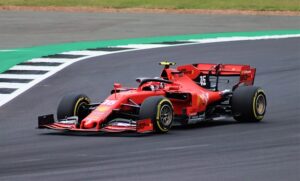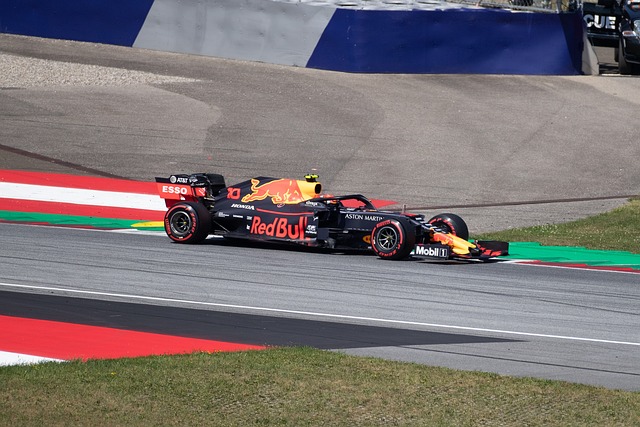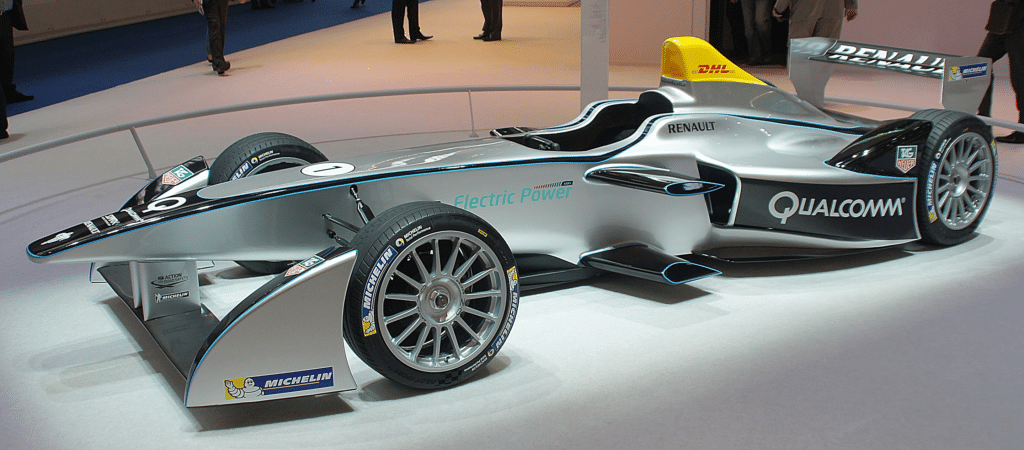Introduction – Formula-E Racing With Electric Vehicles
[Updated: 1/18/2024] The new Formula E season is underway and many viewers are interested in the Formula E Attack Mode, or by its new name the Formula E Attack Charge Validation.
Instead of traditional fuel-powered cars, Formula E (FE) vehicles are fully electric, offering a glimpse into the future of motorsports. One of the unique aspects of FE is Attack Mode, using which the drivers temporarily boost their power by driving through designated zones on the track.

This adds an extra layer of strategy and intensity to the race, as drivers must not only navigate the twists and turns of the circuit but also make calculated decisions on when to activate Attack Mode.
And with multiple manufacturers competing in the series, including household names like Audi and BMW, there’s no shortage of top-notch teams and talented drivers bringing their A-game to every race. If you’re looking for exciting racing action, give FE a watch.
What Is Formula E Attack Mode (Now Known As Attack Charge Validation or ACV)?
Attack Mode, temporarily reimagined as “attack charge validation (ACV)” for the 2022/2023 season of Formula E, is a dynamic feature in the all-electric racing championship.
First introduced in the 2018/2019 season, it initially allowed drivers to temporarily increase their power output by driving through an “Attack Mode” activation zone on the track, marked with LED light panels.
However, starting from the 2022/2023 season, drivers now have more flexibility in how they utilize their attack mode activations.
While the power boost details are yet to be officially confirmed, the ACV system permits drivers to choose various time combinations for their attack mode activations, totaling to a fixed four minutes of additional power.
Instead of providing the teams with details about the number of times and the exact duration of attack mode an hour before the race, the teams and drivers will now have the autonomy to use the total four minutes of additional power in different combinations like 3+1, 1+3, or 2+2 minute scenarios, adding another layer of strategy and excitement to the race.
Each race track, for instance, Brooklyn’s New York circuit or Berlin’s Flughafen Templehof, will provide unique opportunities and challenges for optimal ACV usage, making the development of the race highly unpredictable.
“Attack Charge” – Complements Attack Mode
Attack Charge, a feature introduced in Formula E’s Gen3 era, marks a significant evolution from the series’ original Attack Mode. While Attack Mode offered drivers a temporary power boost for strategic advantage, Attack Charge integrates an innovative fast-charging pit stop into the race.
This pit stop, lasting approximately 30 seconds, equips Gen3 cars with a rapid energy boost, thanks to advanced battery technology capable of receiving 4kWh of energy in a remarkably short period.
Upon completing the Attack Charge pit stop, drivers gain access to enhanced Attack Mode periods later in the race, potentially increasing their car’s power output from 300kW to 350kW.
Power Of Attack Mode Has Increased Since The Beginning
Since Formula E introduced the “Attack Mode” in its 5th season (2018-2019) the power boost and usage parameters have seen some changes as follows:
- Season 5 (2018-2019): In its debut season, Attack Mode boosted the power from the standard race mode of 200 kW to 225 kW. Each driver was required to arm Attack Mode twice in each race, with each activation lasting four minutes.
- Season 6 (2019-2020): The power boost during Attack Mode increased from 225 kW to 235 kW. The number of activations and their duration continued to vary by race, usually two or three activations lasting around four minutes each.
- Season 7 (2020-2021): The power boost remained at 235 kW. The number of times Attack Mode must be used and the duration of each activation continued to be varied by the race organizers.
- Season 8 (2022-2023): As the Gen3 era begins, the “Attack Mode” has been redrafted to become “attack charge validation (ACV).” While the power boost and usage parameters have yet to be officially confirmed, the ACV system is set to allow drivers greater flexibility in their attack mode activations. The durations of boost and number of activations will no longer be fixed for each race; instead, drivers will have the ability to choose various time combinations for their attack mode activations, all adding up to a total of four minutes of additional power. The number of activations could be used in various combinations like 3+1, 1+3, or 2+2 minute scenarios. The change back to races run by a set number of laps, rather than a time limit and one lap, is also expected.
- Season 9 (2023-2024): The 2023-2024 season sees further enhancements to Attack Mode, maintaining the strategic element that has become a hallmark of Formula E racing. This season introduces a maximum of five armings per race, with drivers selecting from time split scenarios of 2 + 6 minutes, 4 + 4 minutes, or 6 + 2 minutes. The activation window for each arming is limited to a quick 5 seconds, requiring precise timing from drivers. The power level during Attack Mode can reach up to 350 kW, a significant boost from the standard race mode. Additionally, Attack Mode cannot be activated during Full Course Yellow (FCY) or Safety Car (SC) periods, adding a layer of strategic complexity to the race. Free Practice sessions allow for unlimited armings and activations, offering teams a chance to experiment with different strategies. These changes emphasize quick decision-making and strategic planning, continuing to evolve the series’ commitment to innovative and dynamic racing.
Demonstration Of Attack Mode
How Long Is Attack Mode In Formula E?
The duration is complex and strategic. Drivers choose from predefined time split scenarios for their Attack Mode activation. These scenarios are:
- 2 minutes + 6 minutes
- 4 minutes + 4 minutes
- 6 minutes + 2 minutes
This means the total duration of Attack Mode can still sum up to a variable amount of time, but it is now structured within these specific combinations. The choice of scenario must be made before the first activation in a race and is locked in once the first activation is successfully completed.
While Attack Mode can still vary in length, it’s now governed by these strategic scenario selections rather than a simple range of one to four minutes.
Do You Have To Take Attack Mode In Formula E?
Yes, every driver must use attack mode at least once during the race. Taking attack mode can give drivers a competitive advantage by allowing them to push their cars harder and gain positions on the track.
Some drivers may also activate attack mode if they find themselves in a difficult situation, such as being stuck behind another car or getting passed by competitors.
Overall, the decision to take attack mode lies with each driver and depends on their racing strategy and overall performance throughout the race.
But regardless of whether or not they choose to activate it, every driver in FE needs to be prepared for the possibility of using attack mode at any time during a race. It’s an exciting and strategic part of the competition that keeps spectators on the edge of their seats!

How Can You Tell If A Formula E Driver Is In Attack Mode?
FE cars have a “Halo” over the cockpit which started as a safety measure to protect the drivers from head injuries. The FE cars also have a special set of embedded lights in the Halo. When the Halo glows blue, its an indication that the car and driver are in attack mode.
Beyond that, body language is another indication that a driver is in attack mode. They will sit forward in the cockpit, their hands tightly gripping the wheel and their head swiveling to assess the track ahead.
Another clear sign is when they activate the attack mode button on the steering wheel, which triggers a power boost for a limited time.
The driver may also opt for greater aggressiveness in their car’s set-up and make bold overtaking manoeuvres.
But perhaps the most telling indicator that a driver is in attack mode is when they pull off daring passing moves and maintain high speeds throughout the race.
The Pros and Cons of Attack Mode in Formula E
The pros and cons of Attack Mode in FE have become a hot topic in the racing world. The main advantage is the added excitement for fans, allowing drivers to strategically overtake their opponents and potentially change the race’s outcome.
Another advantage is that it helps promote alternative energy, as you can only activate the mode by driving through special activation zones powered by renewable energy sources.
However, some argue that it gives an unfair advantage to those who can activate it more often, while others claim it takes away from the true skill and strategy of traditional racing.
Whether Attack Mode is a positive addition or not comes down to personal opinion and how well it is implemented in each race. Attack Mode offers both potential upsides and downsides for FE competitors and spectators alike.
Strategic Implications Of Attack Mode
By offering drivers a temporary power boost, it encourages overtaking, battles for position, and tactical decision-making. The implications of Attack Mode on race strategy are as follows:
Timing
The timing of when to activate Attack Mode is crucial. Drivers need to decide when it’s most beneficial to use the boost, based on factors such as their position in the race, the track layout, and the current energy management situation.
Activating the boost at the wrong time could potentially cost a driver valuable positions or energy reserves.
Positioning
To activate Attack Mode, drivers must go through a designated activation zone located off the racing line. This requires them to briefly sacrifice their position to access the boost. As a result, drivers need to weigh the benefits of activating Attack Mode against the risks of losing track position, especially when they are engaged in tight battles with other competitors.
Overtaking opportunities
Attack Mode offers drivers additional power, which can be used to overtake competitors more easily. This encourages aggressive driving and increases the chances of position changes, making the races more exciting for both participants and spectators.
Energy management
Formula E drivers must manage their energy consumption throughout the race, and using Attack Mode adds an extra layer of complexity to this task.
While the power boost can help with overtaking and defending, it also consumes more energy. Drivers need to manage their energy reserves carefully to ensure they have enough to complete the race, particularly when using Attack Mode multiple times.
Team strategy
Teams need to consider the use of Attack Mode when planning their overall race strategy. They must communicate effectively with their drivers to help them make the best decisions on when to activate the boost.
This collaboration can be the key to securing a better race result, as making the right call on Attack Mode usage can significantly impact a driver’s final position.
Attack Mode adds an extra layer of strategic depth to Formula E racing. It challenges teams and drivers to make tactical decisions in real-time, which can ultimately influence the outcome of the race.
By introducing this element, Formula E has differentiated itself from other racing series and increased the excitement for fans watching the events.
Formula E Cars
Since Season 1 in 2015 Formula E has featured very cool vehicles. Spark, McClaren and Renault teamed up to produce the Spark-Renault SRT_01E for the first season of the FIA Formula E Championship.
The car was the first purpose-built electric racing car to be used in the championship and made its debut at the Beijing ePrix in September 2014.
The car was designed to meet the FIA’s technical specifications for the championship and is powered by a 200kW electric motor developed by McLaren Applied Technologies. The motor is powered by a 28 kWh battery developed by Williams Advanced Engineering.
The car has a maximum speed of 225 km/h and a range of 150 km. The Spark Renault SRT 01E was used by all 10 teams in the FIA Formula E Championship for the 2014/15 and 2015/16 seasons.
The car was replaced by the Spark Renault SRT_02E for the 2016/17 season.

Formula E and Carbon Reduction
Of course, given the tiny impact of Formula E racing compared to the hundreds of millions of cars all over the world, using EVs to race reduces carbon emissions only fractionally.
We think this sport is just great advertisement for the fact that EVs are super powerful and if good enough for racers, then certainly good enough for regular non-racer drivers.
Fan Boost – Update (2023)
The FanBoost system, which has allowed fans to vote for their favorite drivers to receive a power boost during races since Formula E’s inception in 2014, was discontinued in 2023.
The decision was driven by teams and promoters’ desire for a purer form of racing, coupled with controversies surrounding potential manipulation of votes.
The specifics of this change, which marks a transition in the sport towards focusing more on driver skill and team strategy, are expected to be announced during an upcoming world motorsport council meeting along with the details of the new Gen3 format.
Conclusions
In conclusion, Attack Mode is a hotly debated topic in FE racing. While some see it as an exciting new addition that enhances the overall competition, others argue that it takes away from the traditional skills and strategies of driving.
Regardless of one’s opinion on this matter, Attack Mode remains an important part of FE races and will likely remain so for many years. So, if you’re a high-speed racing action fan, check out a FE race soon!
